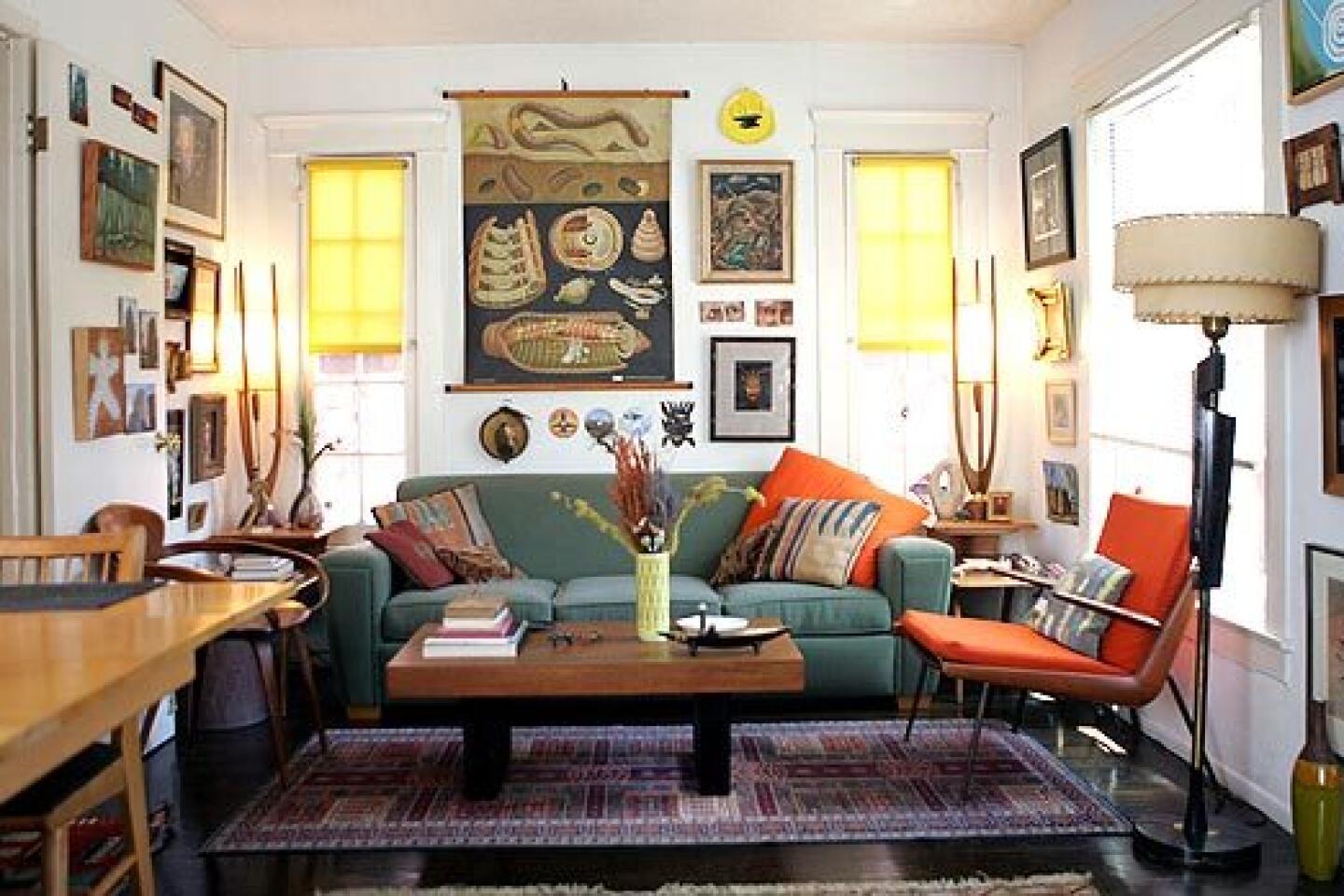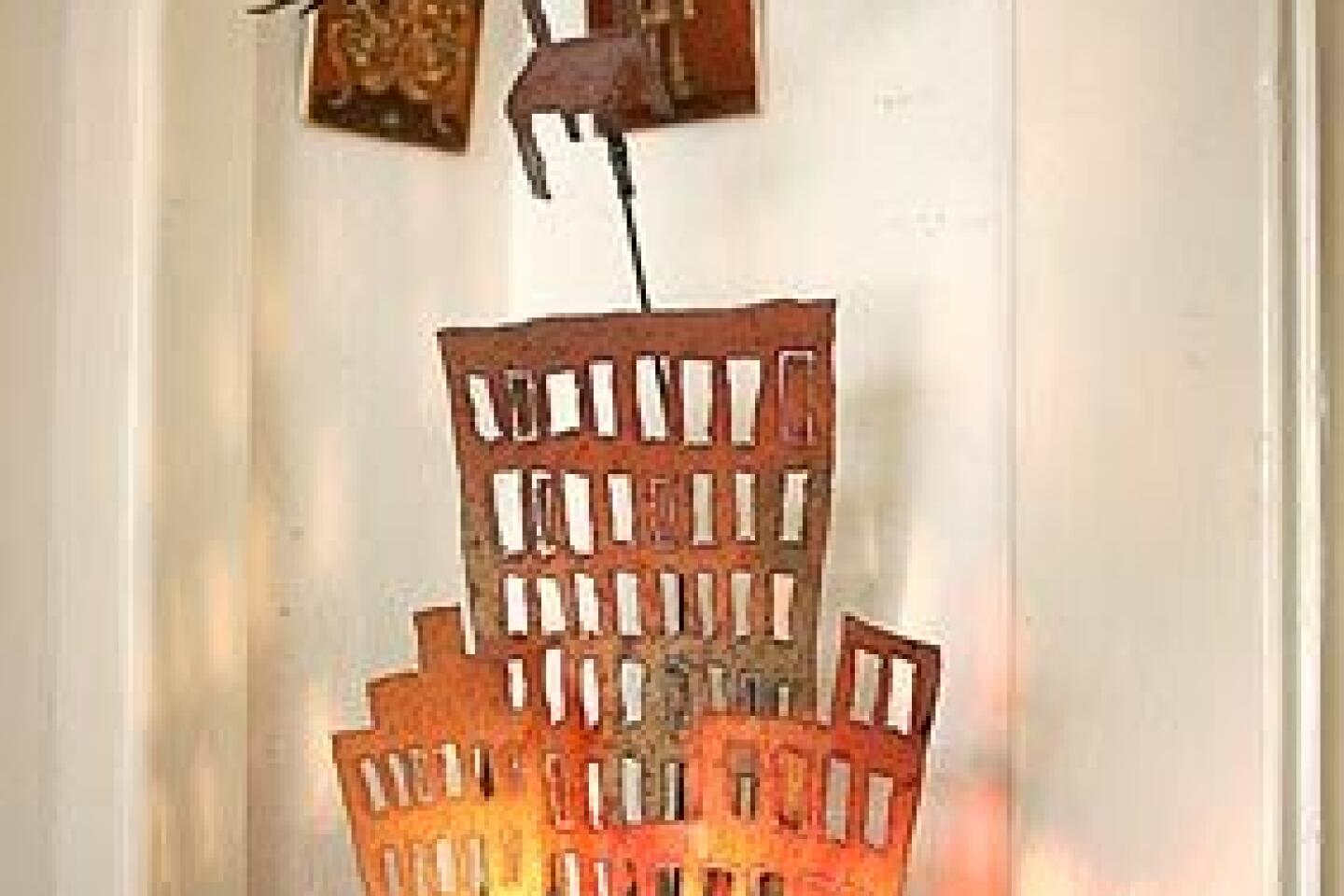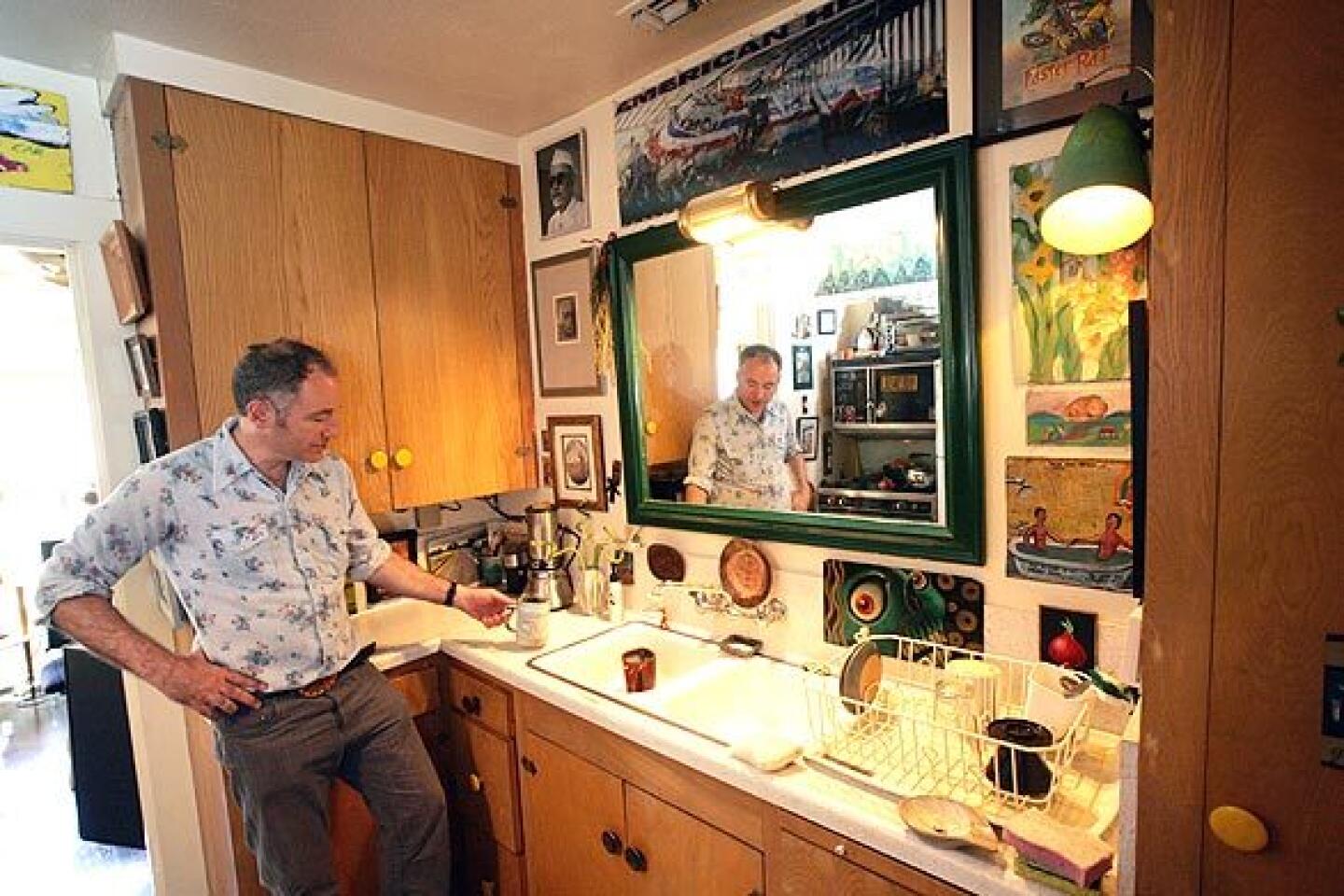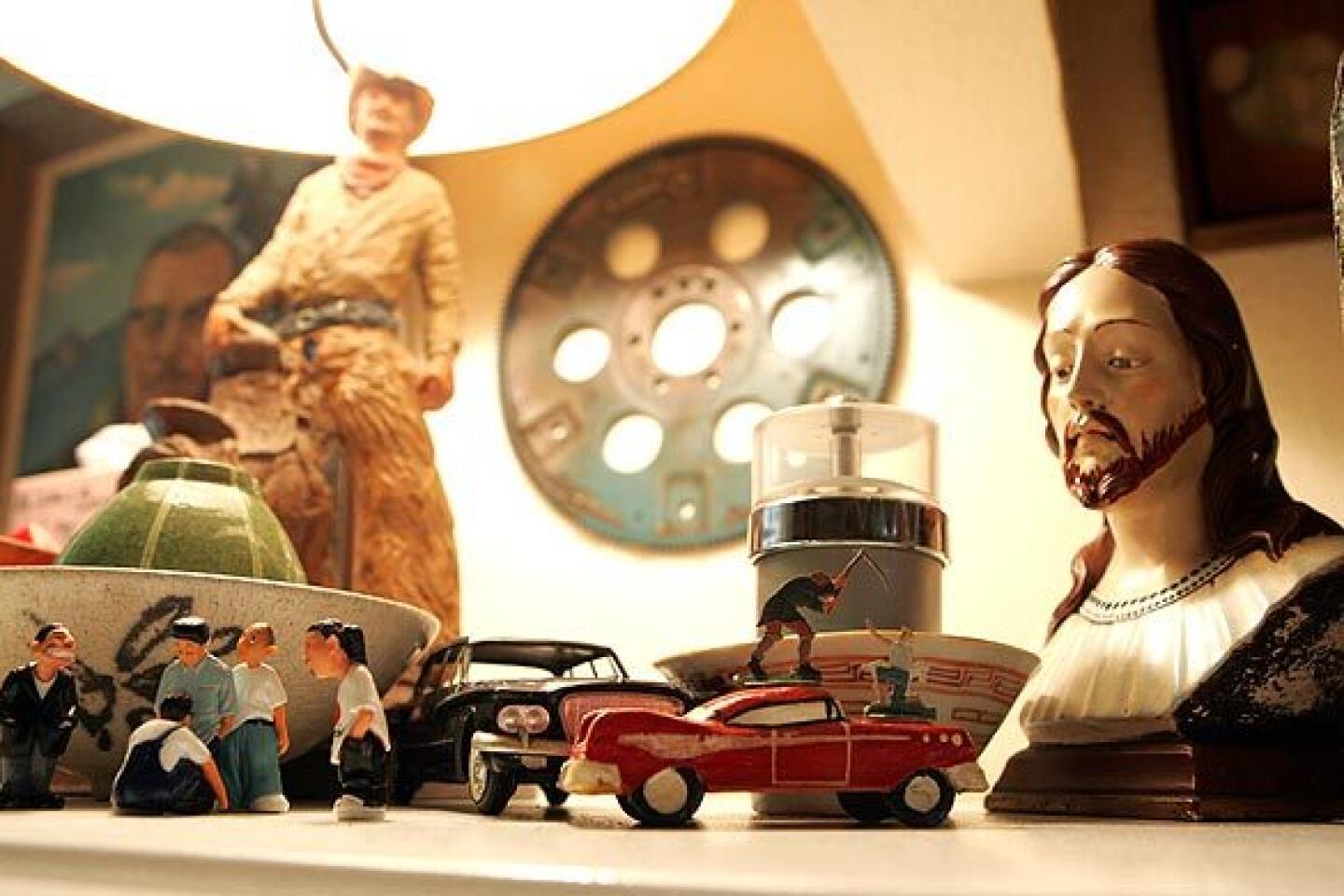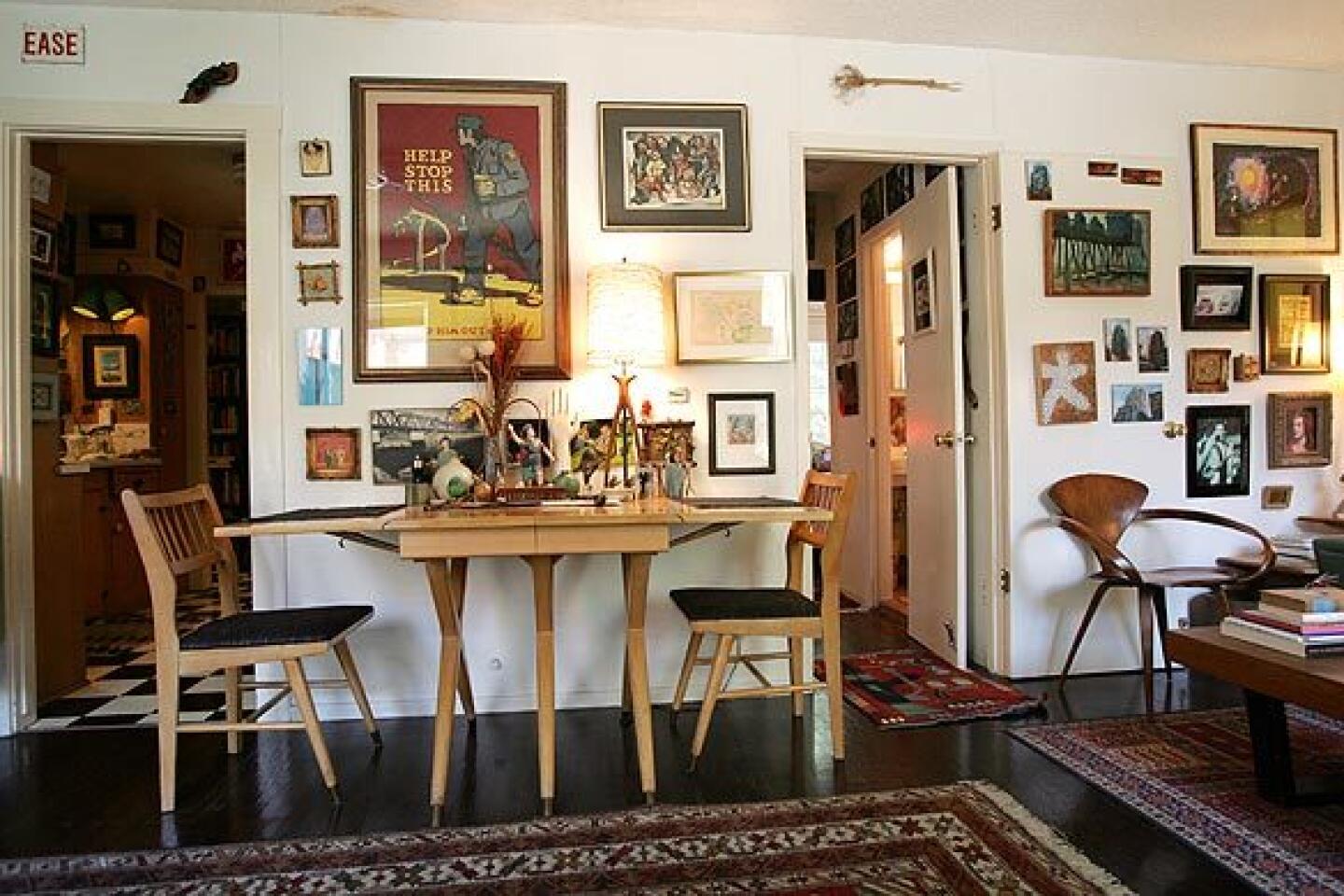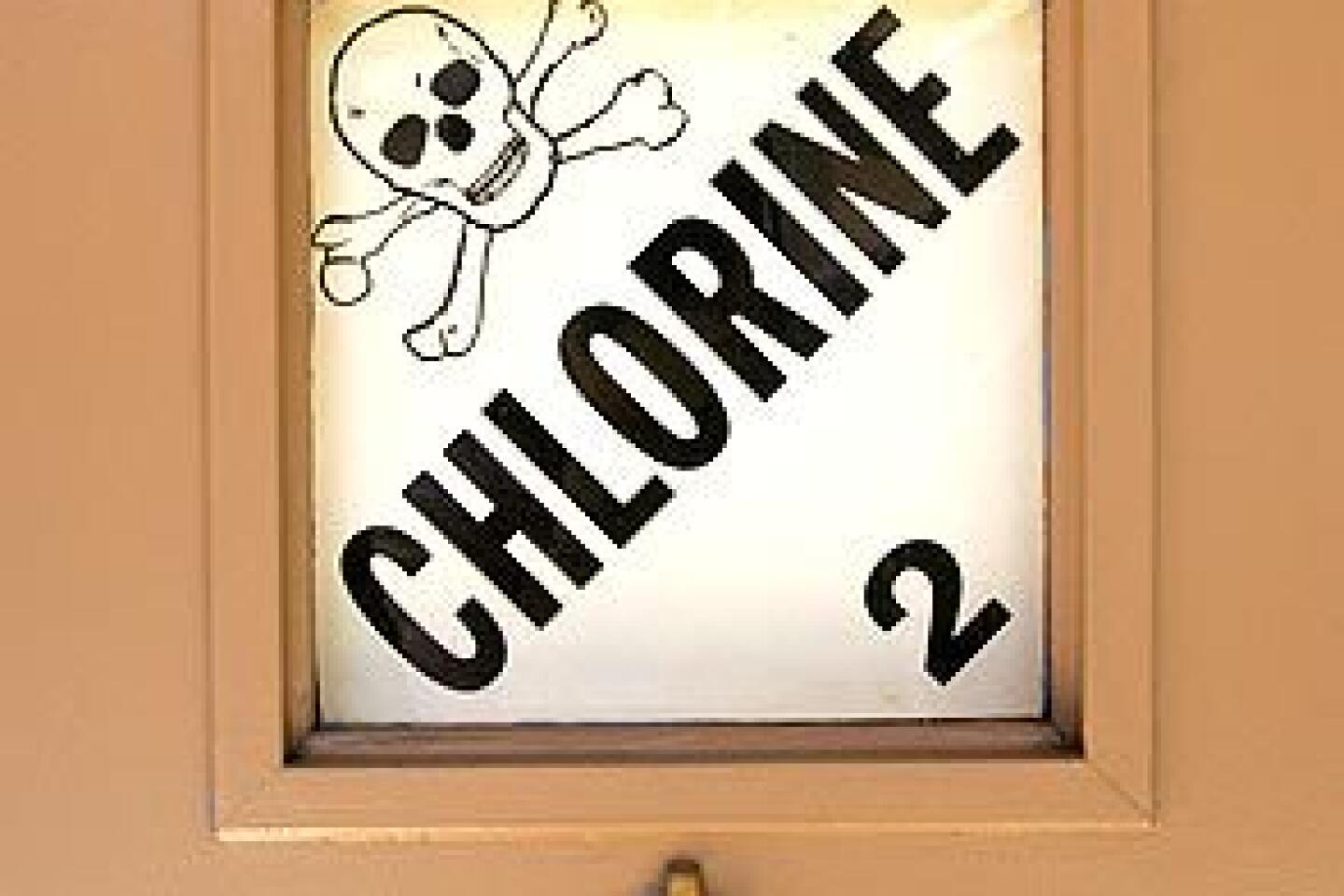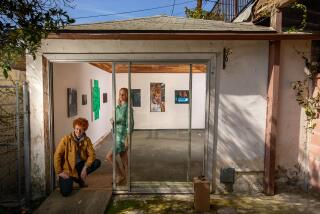Paul Zaloom’s cabinet of curiosities
- Share via
Paul Zaloom is obsessing over a World War I gas mask on EBay. He ultimately loses the bidding -- “It went for $500,” he later explains -- but the defeat hardly detracts from the 600-square-foot West Hollywood guest house in which he lives, an ode to the “grotesque, gnarly and weird.”
Every wall in every room is covered with artwork -- hundreds of pieces in all, hung salon-style. Some are framed. Others are simply tacked to the plaster. There is art in the kitchen, the bathroom, even the garage.
The pieces are as eclectic as the resume of Zaloom, 57, an Obie-winning puppeteer, filmmaker and actor best known to many as the wacky scientist on the children’s TV series “Beakman’s World.” His art spans lowbrow to highbrow, from hot-rod cartoonist Big Daddy Roth to German Expressionist Käthe Kollwitz, displayed along with miniature toys, Glidden pottery, wood etchings, Works Progress Administration prints, postcards, yarmulkes and paintings on CD (even one on a scrub brush).
Chocolate molds shaped like pistols are part of what Zaloom calls his collection of “inappropriate representations of firearms.” Such items have meaning for him, he says, because he is drawn to works that have social and political implications.
Unusual? Yes. Ironic? That’s the point. Beautiful? Surprisingly so.
“That is what is so funny about our culture,” he says. “People don’t find things that are grotesque to be beautiful.”
But beauty isn’t everything. Displaying so many things in a tiny space, he says, is “an instinctive compositional game.” Things are not grouped thematically but by volume and color.
The living room, which is filled with midcentury modern furnishings from the Rose Bowl and Pasadena City College flea markets, feels balanced and cozy. The warm hues of the Heywood-Wakefield furniture are punctuated with orange textiles, a custom teal couch and a striking 1960s rendering of earthworm anatomy.
An anatomical chart as a focal point? Somehow, Zaloom makes it work.
“It was so weird and gross and juicy and really odd that I had to have it,” he says of his Paris flea market find. The woman who sold it was so disgusted and disturbed by the imagery, she had it hidden away, he says. “She was happy that I wanted it.”
When Zaloom moved to L.A. from New York in 1992, he downsized from an 1,800-square-foot loft.
“Ironically, I had the opposite New York-to-L.A. move,” he says, adding that he likes living small.
“I love how cozy it is,” he says. “The colors, the kind of intimacy that it has.”
Friends agree.
“The artworks got lost in his loft,” artist Janie Geiser says. “Here, it is as if the artworks are holding up the walls.”
Zaloom gravitates toward small paintings partly because they work in a petite space and partly because he likes things that are compact. “They are like jewels,” he says. “I can always squeeze something in somewhere.”
A month before his gas-mask bidding war, Zaloom read “Not Buying It: My Year Without Shopping,” Judith Levine’s reflection on anti-consumerism. At the time, Zaloom decided he was done collecting.
So what happened?
“I had a relapse,” he says.
Zaloom says he has cut down on the number of tchotchkes on display because the home had become too cluttered and had lost the postmodern aesthetic he wanted. (Seconds after telling you this, however, he notes that the iconic Eames House in Pacific Palisades features a room with “kitschy objects.”)
“I consider my house to be a private cabinet of curiosities,” he says. Just don’t call it “museum-like,” which to him implies a sense of chronological order that he aims to defy. Zaloom defines his house as “an arbitrary collection of knickknacks and tchotchkes and high-brow artworks.” For comparison, see Gillo Dorfles’ 1969 book, “Kitsch: The World of Bad Taste,” which features a photograph of a house that looks just like Zaloom’s.
“Of course,” he jokes. “I am massively offended by that.”
